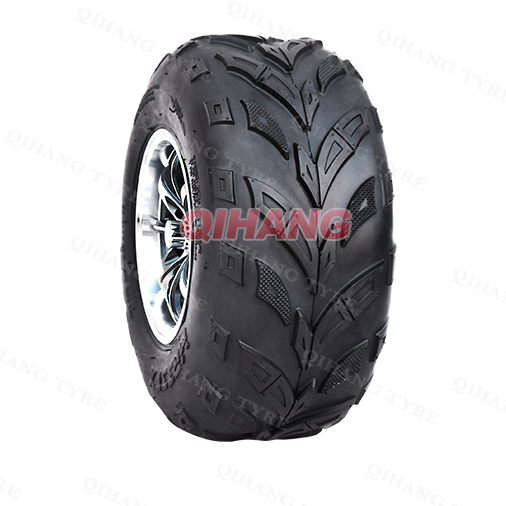Targeted maintenance of agricultural tires in special scenarios requires consideration of the specific operating environment and tire characteristics. The following are maintenance points and suggestions for different scenarios:
1. Maintenance in Extreme Climate Environments
Low Temperature Environment
Tire Preheating: Before winter operation, idle at low speed (≤10 minutes) to gradually warm the tires and prevent rubber embrittlement.
Antifreeze Lubrication: Apply low-temperature resistant grease to bearings and other metal parts to prevent lubrication failure due to low temperatures.
Tire Pressure Adjustment: Increase tire pressure by 5%-8% above the standard value to compensate for the pressure drop caused by gas contraction at low temperatures.
High Temperature Environment
Tire Temperature Monitoring: Check tire temperature every 2 hours during operation. If the tire temperature exceeds 85℃, stop the machine immediately and allow it to cool naturally.
Water Splashing Prohibition: Do not splash water directly onto hot tires to cool them, as this may cause uneven shrinkage of the tread rubber layer, leading to cracks.
Operating Interval: Use an intermittent operating mode during high-temperature periods, stopping for a 15-minute rest after every hour of work.
Corrosive Environment
Post-Contact Cleaning: After operation, thoroughly rinse the tire surface with clean water to remove corrosive residues such as salt, alkali, and fertilizer.
Protective Coating: Regularly apply tire-specific protective wax to form a physical barrier and delay aging.
Material Upgrade: Vehicles operating in corrosive environments for extended periods can use tires with a more corrosion-resistant rubber compound.
2. Complex Terrain Maintenance
Muddy Terrain
Tire Selection: Prioritize using R-2 or PR series deep-tread tires with a tread depth ≥25mm to improve mud removal capabilities.
Tire Pressure Adjustment: Reduce tire pressure to 80% of the standard value to increase the contact patch and enhance grip.
Cleanup Requirements: Immediately clean the mud from the tire tread after operation to prevent hardening and tire damage.
Sand/Hard Ground
Sand Operation: Use IF/VF high-elasticity tires and reduce tire pressure to 70% of the standard value to reduce the risk of sinking.
Hard Ground Operation: Restore tire pressure to the upper limit of the standard value to avoid excessive tread wear; check the tire tread for embedded gravel after operation.
Mountain Operations: Install snow chains or use wide-base tires. When going downhill, use a low gear and intermittent braking to control speed.
Steep Mountain Slopes
Snow Chain Installation: Select diamond-shaped chains suitable for your tire size, ensuring the chain link spacing is ≤5cm to prevent detachment.
Braking Strategy: When going downhill, use engine braking as the primary method, supplemented by intermittent braking, to avoid overheating.
Steering Control: The turning radius should be 30% larger than on flat ground to prevent tire slippage.
3. Maintenance for Special Operating Scenarios
Heavy Load Transportation
Load Distribution: Distribute the weight of the cargo evenly across all tires; the load on a single tire should not exceed 90% of its rated value.
Tire Pressure Enhancement: Increase the tire pressure of the outer rear tires by 0.02-0.03MPa above the standard value to enhance load-bearing capacity.
Regular Rotation: Perform tire rotation every 12,000-15,000 kilometers to even out wear.
High-Speed Operations
Speed Limits: When moving between fields, the vehicle speed should be ≤30km/h to avoid overheating the tires.
Cooling Measures: After driving continuously for 2 hours, stop to allow the vehicle to cool down, paying particular attention to the temperature of the tire shoulder area.
Tread Depth: High-speed operation is prohibited when the tread depth is less than 3mm to prevent slippage.
Plain Field Operations
Tire Specialization: Use high-pattern tires suitable for paddy fields, with a tread depth ≥30mm to improve mud removal performance.
Tire Pressure Optimization: Lower tire pressure by 15%-20% compared to the standard value to enhance buoyancy and reduce sinking.
Cleaning and Maintenance: After operation, wash the tire tread with a high-pressure water gun to prevent mud residue from corroding the rubber.
4. Long-Term Parking Maintenance
Support Solution
Jack Support: Use a hydraulic jack to lift the frame, ensuring the tires are ≥10cm off the ground.
Staple Block Selection: Use wooden or rubber staple blocks instead of jacks to ensure the support surface is flat and free of foreign objects.
Protective Measures
Tread Protection: Apply silicone-based lubricant and wrap with reflective cloth to reduce UV radiation and heat accumulation.
Regular Rotation: Rotate the tires 90° monthly to prevent localized pressure and the formation of flat spots.
Inspection Schedule
Monthly Inspection: Check tire pressure, tread cracks, and support point deformation.
Quarterly Maintenance: Thoroughly clean the tires and reapply protective wax; perform dynamic balancing tests if necessary.


